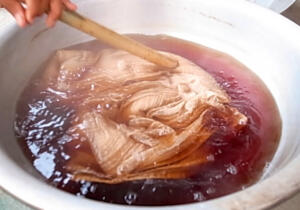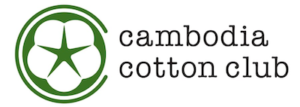



【The joys of natural dyeing①】
The image shows natural dyeing materials from the Battambang forest. Please understand that the detailed process is different from the way of dyeing cotton, because I dyed cotton for the first time by the method I have dyed silk. Also, I myself am an amateur, so please forgive me for any errors.
I have known the term "natural dyeing" for some time, but I never thought I would be doing it myself. My first impression was that it was similar to "cooking.
Once I have some proficiency, I will show you how to do it. You will be able to enjoy this at home. This is a lot of fun.
Natural dyeing requires a process called mordanting. Mordanting is a substance that binds dyes and fibers together.
The Cambodia Cotton Club uses soy milk made from squeezed soybeans for priming, and liquid made from old nails soaked in wood vinegar solution, liquid dissolved in natural alum used for pickles, and liquid dissolved in ash from burning banana leaves for mordant.
Copper and chromium can also be used as mordants, but we do not use them because they are very harmful to the environment and human health, especially in places like Cambodia, where swamps are used as domestic water and serve as swimming pools for children.
When you hear the term "natural dyeing," you may think that it has a low impact on the environment and the human body, but this is actually not true. It depends on what kind of mordant is used, but for example, iron and myouban, which I use, if they are released into the environment beyond the amount that can be naturally decomposed, it will lead to pollution. If tons of soy milk, which is used for pre-processing, is released into a river, it will have some impact on the ecosystem.
Just because it exists naturally in nature does not mean it is safe. The Ashio Copper Mine pollution incident in Japan is a bitter lesson in what can happen to naturally occurring copper if large amounts are released into the environment.
( to be continued )
